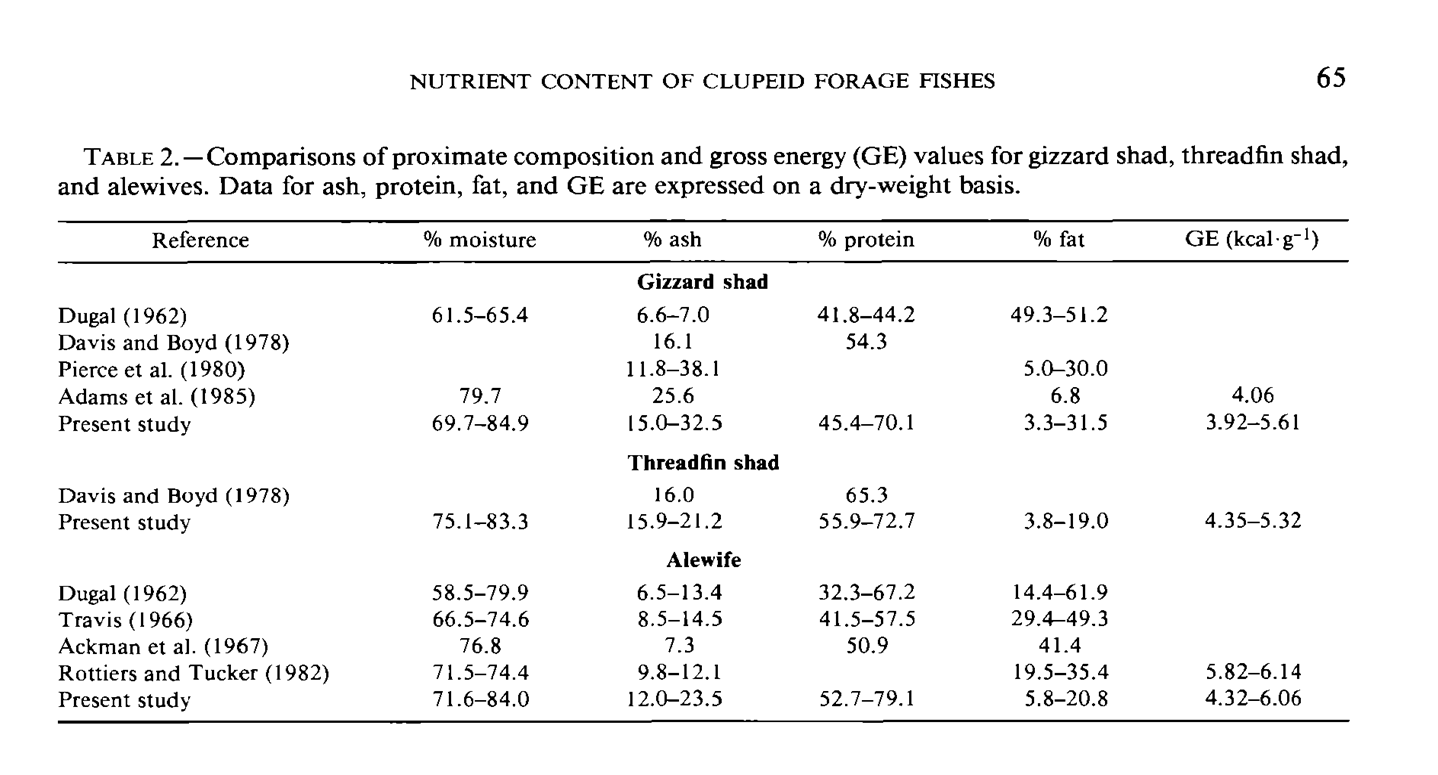Many studies are on either wet weight and dry weight and are on equivalent basis (apples to apples)comparison. Bill I think but not sure that ounce for ounce craws are high up the scale due to the meat and fat value.

The clupeids examined during the present study
appear to be intermediate in nutritional value in
comparison with other forage fishes.
Mean fat percentage
of Dorosoma spp. (24.2%) exceeded that
ofLepomis spp. (15.2%) and fathead minnows Pimephales
promelas (19.1%), but was less than that
of mosquitofish Gambusia affinis (25.8%) and
golden shinersN otemigonusc rysoleucas(3 4.8%)
(Davis and Boyd 1978). Bluegills Lepomis macrochirus
had lower caloric contents (1.06 kcal-g-
on a wet-weight basis) than gizzard and threadfin
shad (1.17 kcal-g on a wet-weight basis) (Minton
and McLean 1982); preliminary data collected
for the present study also showed Lepomis spp. to
he lower in caloric content than the clupeids. The
primary reason for the lower energy content of
Lepomis spp. is probably a higher ash content,
rather than a lower fat content. Mean ash content
of Lepomis spp. was 23.8%; the mean for Dorosoma
spp. was 16.1% (Davis and Boyd 1978).
Scales ofLepomis spp. are larger and thicker than
those of Dorosoma spp., and their skeletal structure
may be more substantial. Scales are about 30-
35% ash on a dry-weight basis (Lagler et al. 1977).
Condition factors are considered to he indicators
of the "degree of well-being, relative robustness,
plumpness or fatness" of fish (Laglet 1956).
Thus, one would expect that fat and caloric contents
would have a strong positive correlation with
condition factor. This was not the case in the
present study; r values were low and variable.
Therefore, condition factors cannot always be
considered to be reliable indicators of the true
"plumpness or fatness" of fish, though seasonal
variation of condition factors do correspond to fat cycles in menhaden Brevoortia spp. (Dahlberg
1969) and in Pacific herring Clupea harengus pallasi
(Hart et al. 1940).


